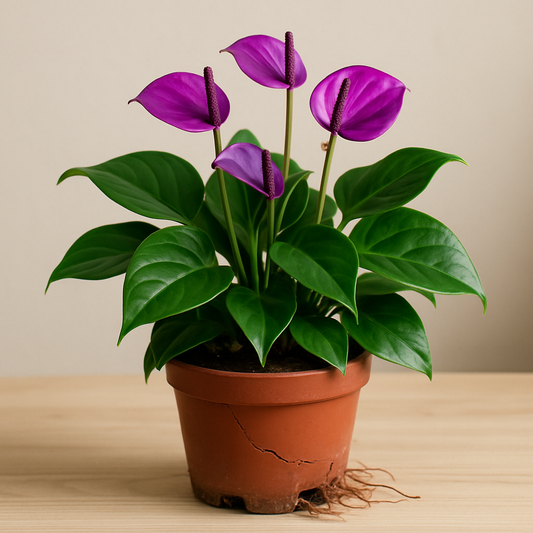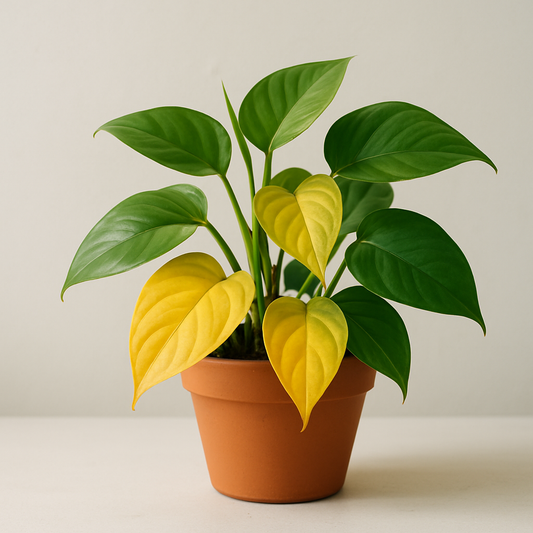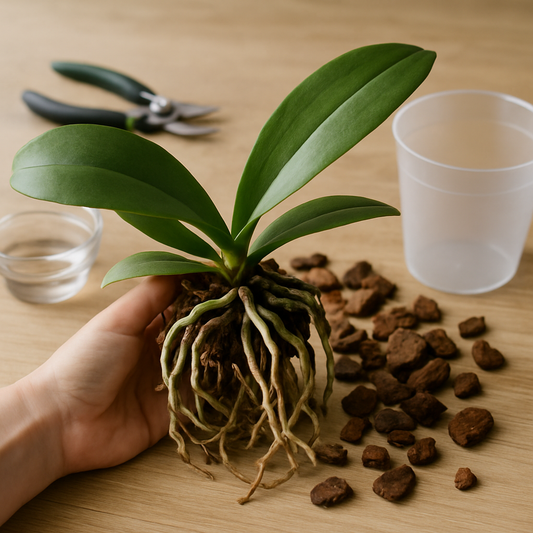The Calathea Leopardina, also known as the Zebra Plant, is a stunningly decorative houseplant beloved for its vibrant green, striped leaves. Whether you're a seasoned plant enthusiast or just starting your plant care journey, this guide will equip you with everything you need to ensure your Calathea Leopardina thrives. Delve into specifics such as watering practices, ideal soil, feeding requirements, light needs, and even design ideas for integrating this beauty within your indoor spaces.
Watering Your Calathea Leopardina
Calathea Leopardina appreciates consistently moist, but not waterlogged, soil. Employ a routine watering schedule, ideally once a week, allowing the top inch of soil to slightly dry out between waterings. Use lukewarm water to protect the roots from shock. During hotter periods or in heated indoor environments, adjust to a more frequent schedule.
Soil Requirements for Calathea Leopardina
Optimal soil for Calathea Leopardina is a well-draining potting mix. A combination of peat, perlite, and regular potting soil can effectively balance moisture retention and drainage. Consider using soil specifically formulated for tropical houseplants to ensure the necessary nutrient profile.
Light Requirements for Growth
The Zebra Plant thrives in bright, indirect light. Too much direct sunlight can scorch its delicate leaves, while insufficient light will fade its vibrant patterns. Position your plant near a north or east-facing window, perhaps filtered through sheer curtains, to provide gentle, consistent light.
Temperature and Humidity Preferences
Being native to tropical environments, Calathea Leopardina prefers temperatures between 65°F to 80°F. Avoid cold drafts and temperatures below 60°F. High humidity is crucial, so aim for a level above 50%. You can enhance humidity by misting your plant regularly, placing it on a tray of pebbles and water, or using a humidifier.
Feeding and Fertilizing Tips
During the growing season (spring and summer), feed your Calathea Leopardina with a balanced, water-soluble fertilizer every four to six weeks. Reduce feeding during fall and winter when its growth naturally slows. Avoid over-fertilization, which can cause salt buildup and root damage.
Pruning and Maintenance
Regularly inspect your plant for yellowing or dead leaves, pruning these back to encourage healthy growth. Use sharp, clean scissors to make precise cuts close to the plant's base. This will help maintain the plant's appearance and promote further growth.
Common Issues and Solutions
Calathea Leopardina can be sensitive to environmental stressors, often manifesting as browning leaf tips or edges. Ensure regular watering, filter direct sunlight, and maintain high humidity to address these concerns. Yellowing leaves may indicate overwatering, requiring a review of your watering regimen.
Preventing and Managing Pests
Common pests like spider mites and aphids may occasionally affect your plant. Regularly inspecting leaves and stems can help catch these pests early. Treat infestations with neem oil or insecticidal soap, applying as directed to safeguard your plant's health.
Propagation Tips
Propagate Calathea Leopardina through division during spring. Gently remove the plant from its pot and separate clumps from the main root mass, ensuring each division has roots attached. Plant the divisions in fresh potting soil, keep the soil moist, and provide the divisions with ample humidity and indirect light.
Overwintering Your Calathea Leopardina
During winter, reduce watering and cease fertilizing to enable the plant to rest. Keep it away from drafty windows and heating vents which can cause stress. Ensure gentle indirect light and maintain humidity with regular misting.
Transitioning Between Indoor and Outdoor Settings
If relocating your plant outdoors during warmer months, acclimate it slowly by gradually increasing its exposure to its new environment. Avoid full sun, opting instead for a shaded area to replicate the indoor light environment.
Indoor Care Essentials
Inside, Calathea Leopardina requires a stable environment with controlled light and humidity. Regularly clean leaves with a damp cloth to improve photosynthesis and attractiveness. Rotate the pot every few weeks to encourage even growth.
Outdoor Care Recommendations
Outdoors, ensure partial shade and protected areas away from harsh winds. Monitor moisture levels, especially during prolonged dry spells when additional watering may be necessary. This plant’s visual appeal can enhance shaded garden areas or patio settings.
Growing Calathea Leopardina From Seed
While seed propagation is rare among home growers, it’s not impossible. Source high-quality seeds and sow them in a warm, humid environment. Keep soil consistently moist and warm to encourage germination, which can take several weeks.
Special Care Tips for Your Zebra Plant
Weekly to bi-weekly leaf cleaning will enhance your plant’s vibrant appearance and efficiency in photosynthesis. If leaf edges brown in low humidity, increase misting frequency. Placement near other plants can naturally boost ambient humidity.
Design Ideas for Styling Your Calathea Leopardina
The unique foliage of the Calathea Leopardina makes it an ideal statement piece. Use decorative pots to elevate its aesthetic, or pair it with neutral-toned planters for a chic look. It complements other tropical plants like ferns and palms. Position it on plant stands or shelves to make its striking leaves a focal point in living rooms or offices.
Learn more about the Calathea Leopardina - Stripes for Days and bring its charm to your space today!




